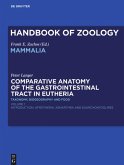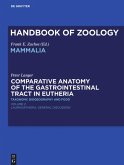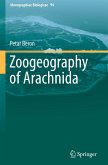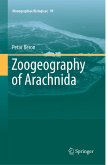There are nearly 6,000 mammalian species, among them our own. Research on our evolutionary cousins has a long history, but the last 20 years have seen particularly rapid progress in disentangling the interrelationships and evolutionary history of mammals. The present volume combines up-to-date reviews on mammalian phylogenetics with paleontological, taxonomic and evolutionary chapters and also summarizes the historical development of our insights in mammalian relationships, and thus our own place in the Tree of Life. Our book places the present biodiversity crisis in context, with one in four mammal species threatened by extinction, and reviews the distribution and conservation of mammalian diversity across the globe. This volume is the introductory tome to the new Mammalia series of the Handbook of Zoology and will be essential reading for mammalogists, zoologists and conservationists alike.
"[...] this volume is a valuable collection of well-researched essays that will remain reference reading on their subjects for many years ahead."
Alessandro Minelli in: Journal of Zoological Systematics and Evolutionary Research (2019), 1-2
"Das Buch profitiert von der Ausgewogenheit zwischen der systematischen Besprechung der einzelnen rezenten und fossilen Gruppen und den Grundlagen der Genetik, Physiologie, Embryologie und Artenschutz der Säugetiere. Mit dem "Handbook of Zoology: Mammalia" liegt ein umfassendes Werk an Säugetierforschung vor, das sowohl textlich als auch bildlich sehr übersichtlich gestaltet ist. Es besticht mit seinen hervorragenden Bildtafeln und Schaubildern, die dem aktuellen Wissenstand entsprechen, wodurch es auch als Lehrbuch sehr gut geeignet erscheint."
Cathrin Pfeiff in: GMIT 75 (2019), 87-88
Alessandro Minelli in: Journal of Zoological Systematics and Evolutionary Research (2019), 1-2
"Das Buch profitiert von der Ausgewogenheit zwischen der systematischen Besprechung der einzelnen rezenten und fossilen Gruppen und den Grundlagen der Genetik, Physiologie, Embryologie und Artenschutz der Säugetiere. Mit dem "Handbook of Zoology: Mammalia" liegt ein umfassendes Werk an Säugetierforschung vor, das sowohl textlich als auch bildlich sehr übersichtlich gestaltet ist. Es besticht mit seinen hervorragenden Bildtafeln und Schaubildern, die dem aktuellen Wissenstand entsprechen, wodurch es auch als Lehrbuch sehr gut geeignet erscheint."
Cathrin Pfeiff in: GMIT 75 (2019), 87-88








